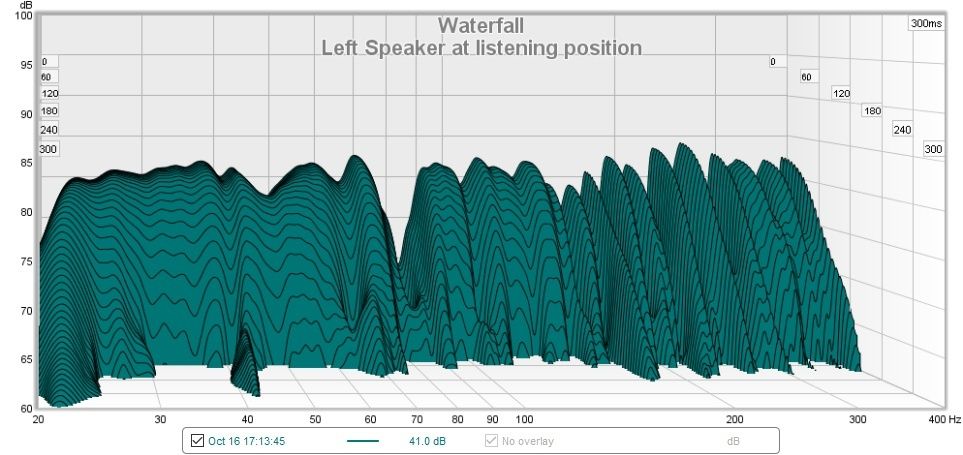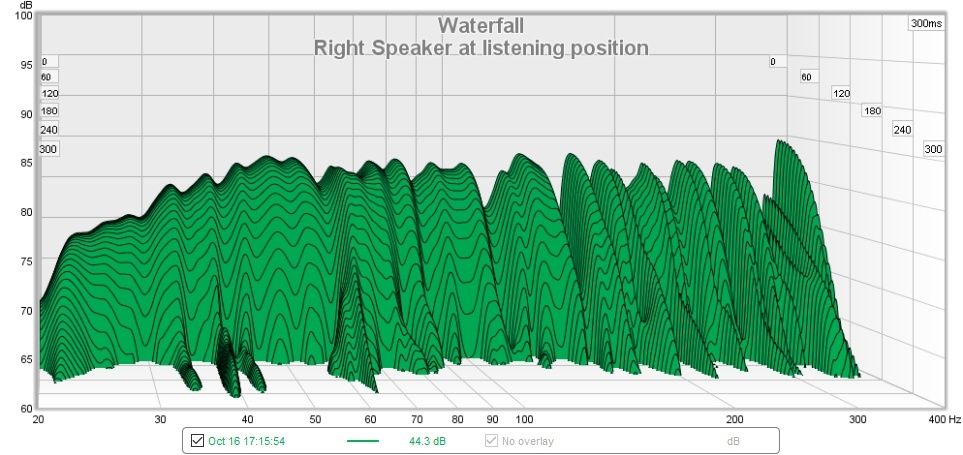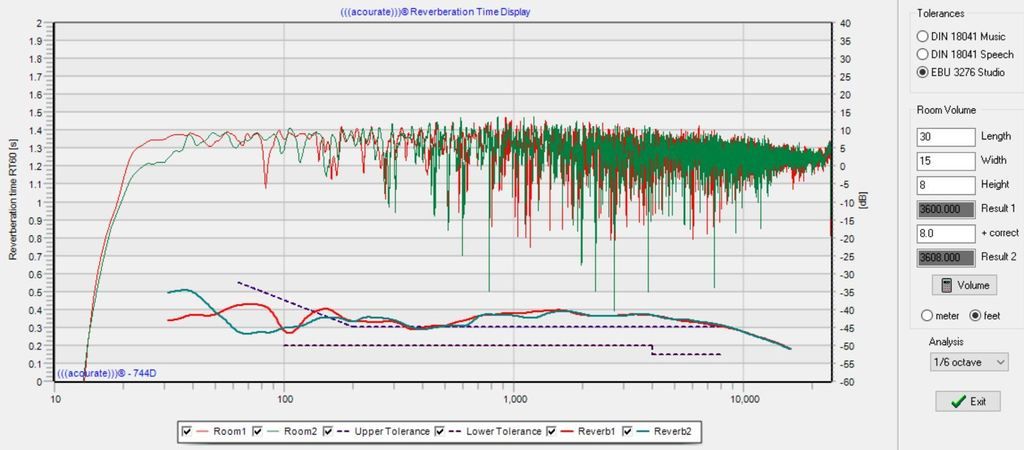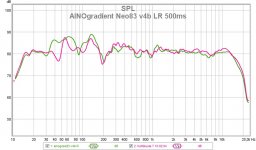Here is a link to a quite late John Atkinson measurement of Dali Rubicon, which has very pleasant sound in a room. Pay attention of the higly appreciated little KEF LS50 playing without help from desktop or wall...
DALI Rubicon 8 loudspeaker Measurements | Stereophile.com
And this is my room response of a single diy-speaker, L/R (REW sweep 500ms). Pleasant, musical and natural - a verdict given by visitors
DALI Rubicon 8 loudspeaker Measurements | Stereophile.com
An externally hosted image should be here but it was not working when we last tested it.
And this is my room response of a single diy-speaker, L/R (REW sweep 500ms). Pleasant, musical and natural - a verdict given by visitors
Attachments
Last edited:
Here is a link to a quite late John Atkinson measurement of Dali Rubicon, which has very pleasant sound in a room. Pay attention of the higly appreciated little KEF LS50 playing without help from desktop or wall...
DALI Rubicon 8 loudspeaker Measurements | Stereophile.com
An externally hosted image should be here but it was not working when we last tested it.
And this is my room response of a single diy-speaker, L/R (REW sweep 500ms). Pleasant, musical and natural - a verdict given by visitors
FWIW as an aside, JA's "anechoic" measurements don't show the true anechoic response below his near field splice frequency, so his "anechoic" graphs are somewhat misleading:
Rmaf 2015 (I) - Page 5
http://techtalk.parts-express.com/showthread.php?248461-Rmaf-2015-(I)&p=2087345#post2087345
''Target Listening Curve simulates the actual response of actual domestic speakers in actual domestic rooms, as measured and averaged.If we can judge by the survey referenced above, then the average control room with Genelec monitors is flat with a little bass bump.
Our house curve does not fit that. What's up?
B&K wanted to know the average frequency response found in actual domestic listening scenarios. So they measured many and came up with that curve. It is not an aspiration, not a wish, but a measured reality. Sonarworks more recently did they same thing. i.e. Measured FR on big speakers and small speakers in many actual domestic rooms. Remarkably their big speakers averaged response is very similar to the old B&K
''
what is interesting is that Toole study seem to show that the B&K target curve is also the response preferred by listeners.
Last edited:
Many well regarded high end speakers dont boost the lows. Definitely a lot do, but also a lot don't..
Looking at the responses of highly regarded high end speakers from NRC measurements, they follow this trend as well.
Many well regarded high end speakers dont boost the lows. Definitely a lot do, but also a lot don't.
Yes, thanks for clarifying. That was my intended message as well.
FWIW, I find I really can tell easily if bass is boosted and most of the time, if not always, I prefer flat even in very well treated rooms.Yes, thanks for clarifying. That was my intended message as well.
Many well regarded high end speakers dont boost the lows. Definitely a lot do, but also a lot don't.
Yes, this is the dilemma or at least question here. Have we lately been brainwashed to think that lean bass is good and full bass is too much? I think "we" are, at least here in Scandinavia and even Europe. During '80s American speakers had certain full-bodied sound (Klipsch, Cervin-Vega, JBL etc. but they have changed too.
Are straight (pseudo)anechoid measurements published in magazines overemphasized? Yes?
During the last 1½ years I have had the pleasure of fiddling with minidsp-controlled active speakers, dipole and monopole. I always end up with room response like the EBU-curve, added with room modes.
I seem to recall the theory for that slight bass boost in the JBL curve was due to a speaker that measures flat in an anechoic room is displaying a similar boost in a non anechoic room. That would imply a flat measuring speaker placed in a studio control room would exhibit a similar boost. Which fit's the example of the Dali Rubicon Juhazi showed.
A flat anechoic response will have a slight bass boost in a small room. The amount is highly dependent on the rooms LF damping, which is highly variable. This makes it difficult to determine what the actual bass level is any arbitrary listening room.
I have always believed that we want a slight bass boost at LFs because the small rooms dissipate the sound so fast. This makes the LF notes last very short when compared to a larger room with some LF reverberation. Boosting the lows helps to subjectively bring the lows up to what we expect to hear in a larger room.
I do not like boosted lows when it is done within the speaker mains, it just sounds boomy. I do like boosted lows when it is done with multiple subs however and this ends up just sounding very natural - not boomy at all.
I have long believed that the way to do multiple subs is to use a reverberation tail on the controller for all but the sub closest to the mains. This de-correlates them from one another and enhances the time of the signal. I have never tried this is a room, but we did try it in a car one time. It had great potential, but alas that project was cancelled and the idea just died there.
I have always believed that we want a slight bass boost at LFs because the small rooms dissipate the sound so fast. This makes the LF notes last very short when compared to a larger room with some LF reverberation. Boosting the lows helps to subjectively bring the lows up to what we expect to hear in a larger room.
I do not like boosted lows when it is done within the speaker mains, it just sounds boomy. I do like boosted lows when it is done with multiple subs however and this ends up just sounding very natural - not boomy at all.
I have long believed that the way to do multiple subs is to use a reverberation tail on the controller for all but the sub closest to the mains. This de-correlates them from one another and enhances the time of the signal. I have never tried this is a room, but we did try it in a car one time. It had great potential, but alas that project was cancelled and the idea just died there.
There was a fame to putt a standalone subwoofer in the middle of the living room in the front of the main speaker; near the listener where the low table of the living room in front of the sofa and chairs : band pass, reflex, open w bafle, sealed... everything...
...
I have always believed that we want a slight bass boost at LFs because the small rooms dissipate the sound so fast. This makes the LF notes last very short when compared to a larger room with some LF reverberation. Boosting the lows helps to subjectively bring the lows up to what we expect to hear in a larger room. ...
After a weeny bit of tinkering I second that! Or at least small rooms have very wobbly decays because of room modes.
Other factors are ear/brain's loudness contour, at least I listen to much lower than live/recording studio sound levels.

Here is decay of a bass-reflex two-way in my room (L)
---
p.s. I loved my -80s Yamaha receiver that had bass/mid/treble contour knobs! Most had only on/off switchable Loudness.
Attachments
Last edited:
Yes, this is the dilemma or at least question here. Have we lately been brainwashed to think that lean bass is good and full bass is too much? I think "we" are, at least here in Scandinavia and even Europe. During '80s American speakers had certain full-bodied sound (Klipsch, Cervin-Vega, JBL etc. but they have changed too. .
I used to be in the lean is best camp, but not any more. I've been attending many more concerts in the last 10 years and they all have more bass impact and level than I was accounting for. Some of this is the Fletcher Munson effect (concerts are louder), but not all of it. eg, I try and catch 4 or 5 symphonic events yearly at Southam Hall in Ottawa. The front row lower balcony is positively bloated and so warm that an audio junkie would plug their nose at this balance in the home.
I have always believed that we want a slight bass boost at LFs because the small rooms dissipate the sound so fast.
Interesting concept. You'd hope the control rooms also see faster-RT60-in bass-than-a-big-live-event-room as well though, and the boost be applied in the recording, not playback? Circle of confusion strikes again.
A flat anechoic response will have a slight bass boost in a small room. The amount is highly dependent on the rooms LF damping, which is highly variable. This makes it difficult to determine what the actual bass level is any arbitrary listening room.
Bang on the money Earl. And yet we still have speaker systems that seem to disregard this simple truth. And the mere mention of standards gets you nowhere.
Time somebody with enough clout tried to make a serious standard that will be a yardstick for quality comparison.
As always, depends on people's preferences. As mentioned earlier, to hear the imaging on the recording as best as possible one needs to attenuate the early reflections below the masking threshold in the listening environment. See post 184 http://www.diyaudio.com/forums/mult...t-vs-accurate-hi-fidelity-19.html#post4485435
Same approach applies to hearing the low frequency decay of a hall on a recording for example. If there is too much low frequency build up in the reproduction environment (i.e. listening room), then that will mask the low frequency reverberation that is on the recording.
There are control room specs on the decay times as mentioned in the ITU, EBU 3276 (see Fig 1 Tolerance limits for reverb time),and other specs, but basically they say the same thing. The rule of thumb is to keep the decay rates/reverb time as even across frequency as possible, with special attention to the very low frequencies as most environments will have too much low frequency decay. Employing bass traps and/or high passing the speakers with a filter at 20 Hz will assist in controlling the low frequency build up.
Here is an example of relatively even decay for both left and right speakers measured at the listening position:


I prefer REW's waterfall display. REW, Acourate and other tools also can correlate decay/reverb time over the entire frequency range. While I have a fairly even decay at low frequencies, my room is a bit on the bright side in the midrange as can be seen with this reverb calculation:

My preference being trying to hear as much of the recording, for as long as possible before the room has it's way and masks the recording.
Same approach applies to hearing the low frequency decay of a hall on a recording for example. If there is too much low frequency build up in the reproduction environment (i.e. listening room), then that will mask the low frequency reverberation that is on the recording.
There are control room specs on the decay times as mentioned in the ITU, EBU 3276 (see Fig 1 Tolerance limits for reverb time),and other specs, but basically they say the same thing. The rule of thumb is to keep the decay rates/reverb time as even across frequency as possible, with special attention to the very low frequencies as most environments will have too much low frequency decay. Employing bass traps and/or high passing the speakers with a filter at 20 Hz will assist in controlling the low frequency build up.
Here is an example of relatively even decay for both left and right speakers measured at the listening position:


I prefer REW's waterfall display. REW, Acourate and other tools also can correlate decay/reverb time over the entire frequency range. While I have a fairly even decay at low frequencies, my room is a bit on the bright side in the midrange as can be seen with this reverb calculation:

My preference being trying to hear as much of the recording, for as long as possible before the room has it's way and masks the recording.
My preference being trying to hear as much of the recording, for as long as possible before the room has it's way and masks the recording.
Looking at your speakers, the horn has quite a bit to do with reaching that goal.
Did you post your correction curve anywhere?
I'm thinking with a larger mouth horn your overall direct versus reflection point will reach a little lower into the upper midrange.
I used to be in the lean is best camp, but not any more. I've been attending many more concerts in the last 10 years and they all have more bass impact and level than I was accounting for. Some of this is the Fletcher Munson effect (concerts are louder), but not all of it. eg, I try and catch 4 or 5 symphonic events yearly at Southam Hall in Ottawa. The front row lower balcony is positively bloated and so warm that an audio junkie would plug their nose at this balance in the home.
My reference is also consert halls plus some small hall or club jazz and recitals. I have several times sat behind or next to the hall mixer who's holding a tablet and adjusting the live sound in partly amplified events. They have said that mixing is difficult in small halls because of great variations in sound at various sitting positions!
Most rock and even some jazz gigs have wild bass boost, even 20db at 50Hz measured with a cell phones app. I don't like that and for sure they are not my reference, but obviously they are eg. for my sons! It is too easy to overboost bass like that with in-ear headphones and modern mp3 players and even phones. My sons find my speakers weak on bass!
Last edited:
My sons find my speakers weak on bass!
Is that not true of every son of every father?
I said the same to my father, and my son's said the same to me!
Interesting concept. You'd hope the control rooms also see faster-RT60-in bass-than-a-big-live-event-room as well though, and the boost be applied in the recording, not playback? Circle of confusion strikes again.
One would like this corrected in the mix, correct. I do think that my room, for example, is much smaller and much deader (at LFs) than most mastering rooms.
Same approach applies to hearing the low frequency decay of a hall on a recording for example. If there is too much low frequency build up in the reproduction environment (i.e. listening room), then that will mask the low frequency reverberation that is on the recording.
How could the buildup of bass in a small room ever even come close to the LF reverb time of an auditorium? It would be 10:1 or more! (Exceptionally bad small rooms at a prominent resonance being an exception.)
- Status
- Not open for further replies.
- Home
- Loudspeakers
- Multi-Way
- Smooth (Flat) vs. Accurate (Hi-Fidelity)

